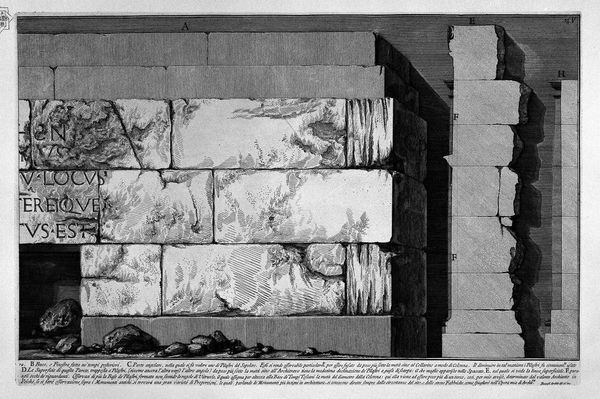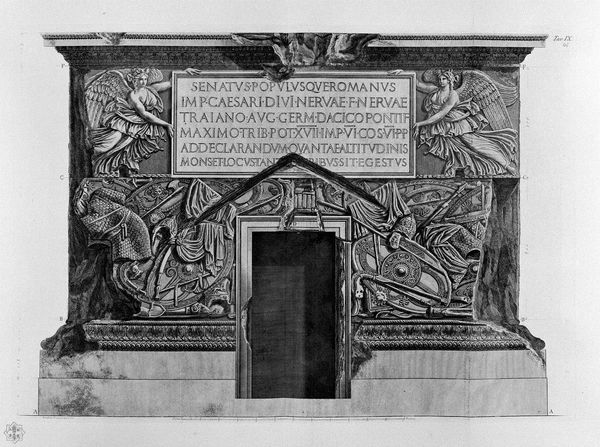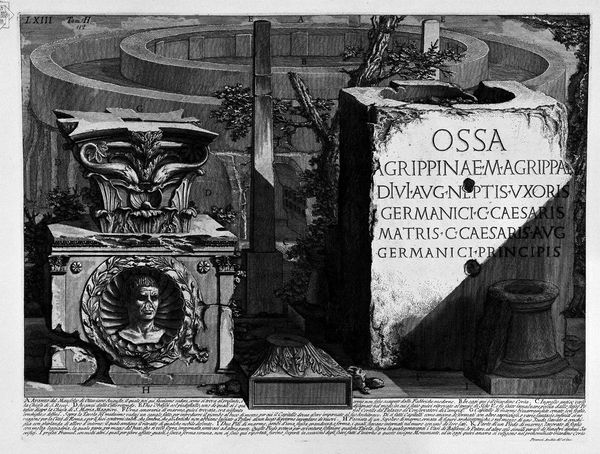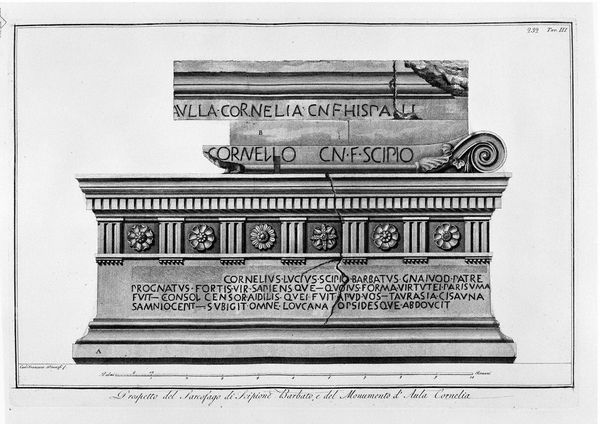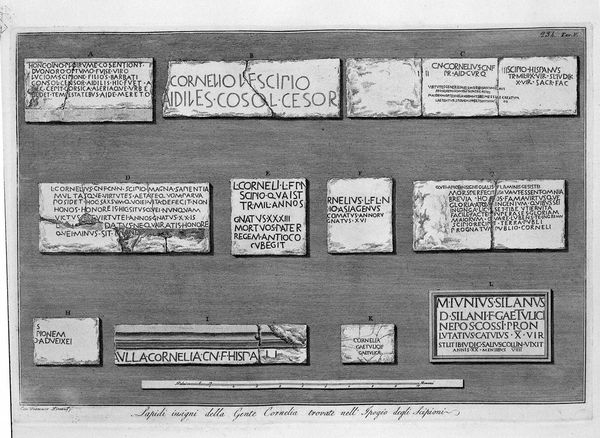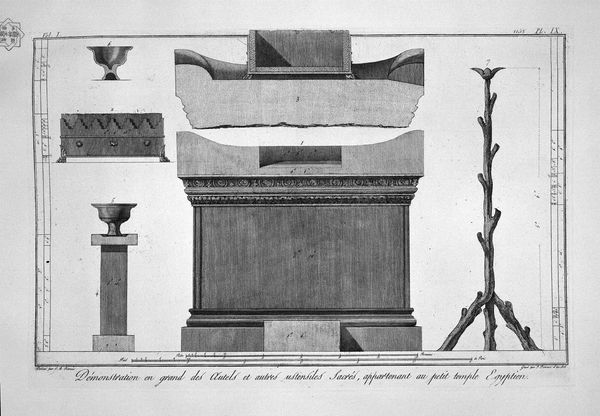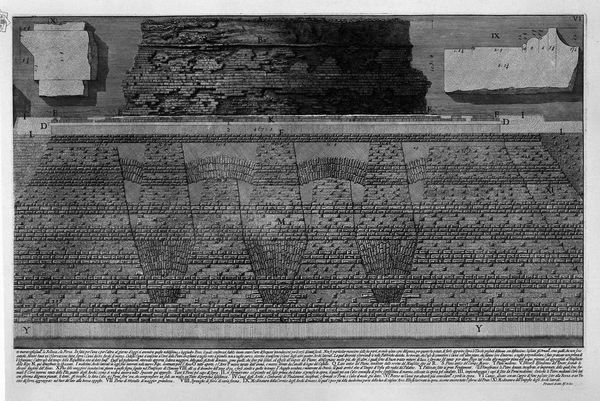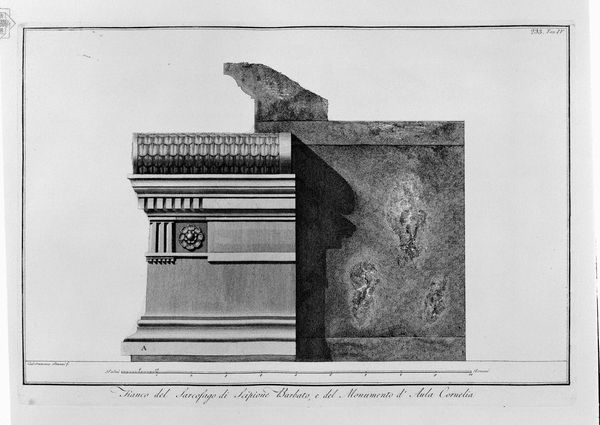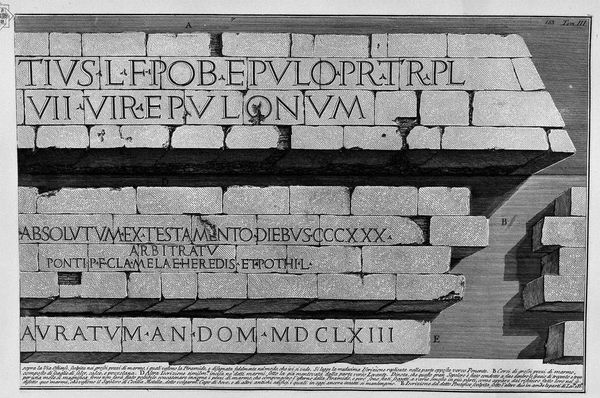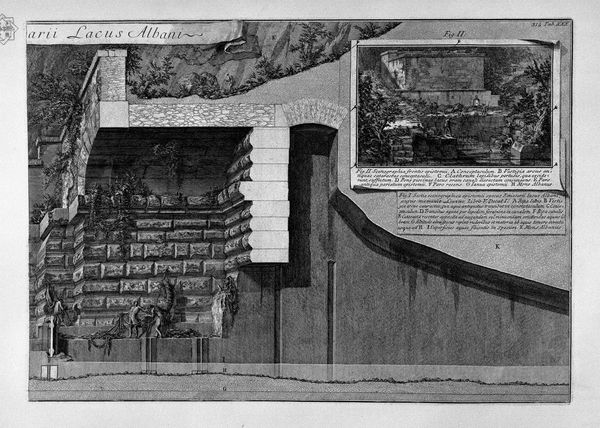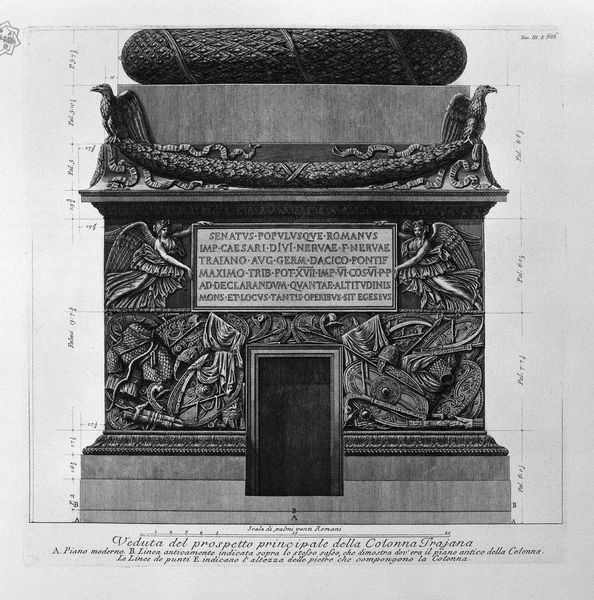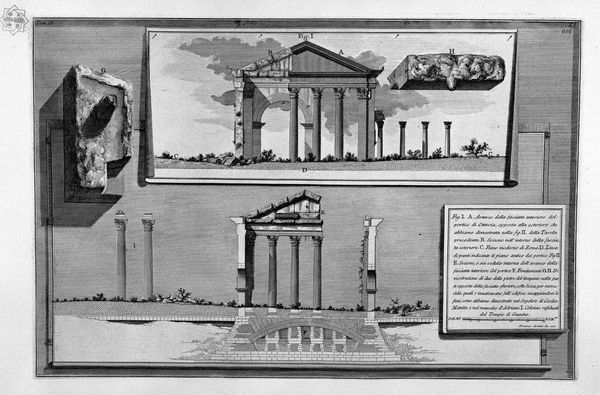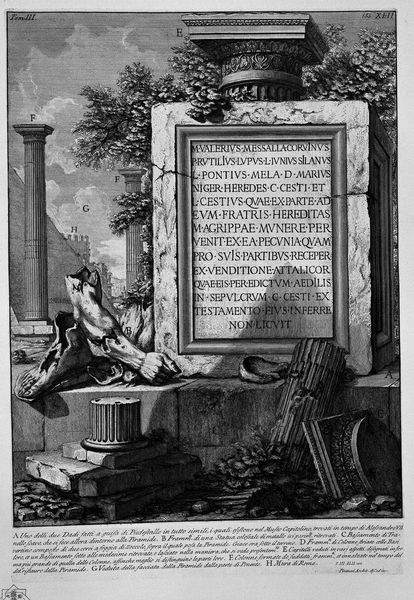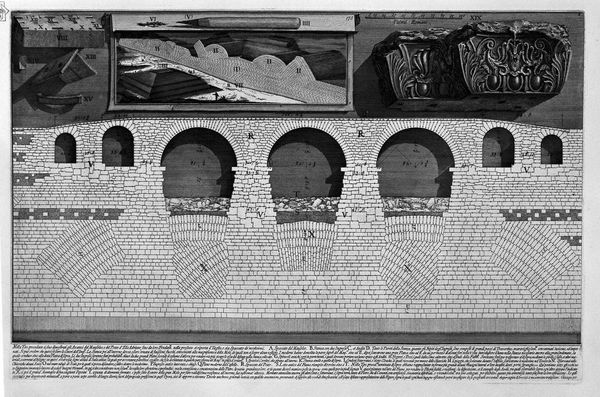
drawing, print, etching, engraving
#
drawing
#
neoclacissism
# print
#
etching
#
landscape
#
geometric
#
ancient-mediterranean
#
history-painting
#
engraving
#
monochrome
Copyright: Public domain
Curator: My first thought looking at "The Roman Antiquities, t. 2, Plate V" by Giovanni Battista Piranesi is how immense and weighty everything feels. The stark monochrome and focus on texture gives it such gravity. Editor: Precisely. This print from 1756 comes from a period fixated on reviving the grandeur of antiquity through Neoclassicism. Piranesi wasn't merely documenting ruins; he was actively constructing a historical narrative about power. Curator: The inscription itself seems to dominate the visual space. What can you tell me about it? It's fragmented, isn’t it? Editor: Yes, the fragmented Latin inscription contributes to the work’s emotional complexity. It’s a dedication of some sort, likely praising civic virtues, reflecting how the Roman elite publicly memorialized themselves. The erosion adds a melancholic tone. Curator: So, while Piranesi is using Neoclassical style, rooted in ideas of order, reason and perfection, the overall feeling isn’t one of triumph. Instead it evokes a deep sense of loss or the weight of history. The scene reminds me a skull, as memento mori... Editor: Right, there’s tension at play here. He's reminding his 18th-century audience that even the most enduring empires crumble and fade, creating a sense of shared fate. This would be particularly relevant amidst rising anxieties of the Enlightenment. Curator: It is striking how such attention is given to rendering these ruined architectural details. How this connects with a psychological and anthropological exploration of history, its weight and cultural legacy. Editor: He was incredibly influential on how Rome itself came to be understood. These weren't just accurate renderings, they were theatrical productions designed to evoke a sense of the sublime. Think of Piranesi not simply as an artist but an early promoter, shaping how Europeans imagined and engaged with their classical heritage. Curator: It's fascinating to observe how these engravings both document history, and construct history. Piranesi wasn't just reflecting reality, but interpreting it and amplifying its power for generations to come. Editor: Yes, and how art plays a vital public role in that ongoing interpretation. "The Roman Antiquities, t. 2, Plate V" isn’t just about then, but now—about how we continue to engage with historical narratives and imbue symbols with cultural weight.
Comments
No comments
Be the first to comment and join the conversation on the ultimate creative platform.
